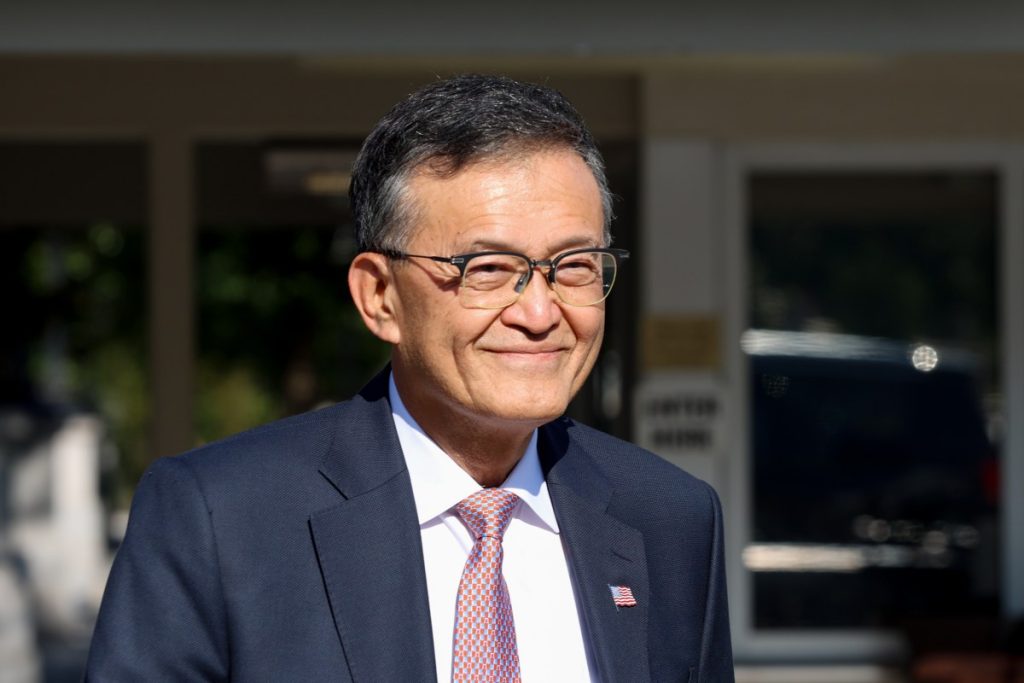The Trump administration made an unprecedented, and confusing, move last week when it announced plans to convert money Intel was supposed to receive through Joe Biden-era government grant programs into a 10% equity stake.
While it remains unclear if converting those government grants into equity is even possible — that’s up for debate — it’s even less obvious how this move will solve Intel’s biggest problem, its waffling foundry business. Even Intel is unconvinced.
Intel Foundry, which manufactures custom semiconductors for outside customers, has not been fruitful for the company. The business division lost out on potential big contracts, like one with Sony, according to Reuters, and has cost the company significantly more than it has brought in.
Intel Foundry reported an operating income loss of $3.1 billion in the second quarter. The company has also laid off thousands of people since the beginning of the year, with the foundry business unit being hit especially hard.
Differences over how Intel would turn around its struggling foundry business was partially responsible for Lip-Bu Tan’s resignation from the company board in August 2024. Tan was appointed CEO in spring 2025.
Kevin Cassidy, a managing director at Rosenblatt Securities, told TechCrunch he doesn’t see how this deal will solve Intel’s problems. Intel Foundry doesn’t need money to solve its issues, he said, instead it needs to change its approach to its customers.
“They didn’t understand customer service,” Cassidy said of Intel Foundry’s struggles to sign customers. “They have always manufactured internally, the manufacturing group was king. It’s hard to be a customer service-focused group when you think you know better.”
Intel did not respond to a request for comment.
Techcrunch event
San Francisco
|
October 27-29, 2025
Ripple effect
Intel recently acknowledged the potential downsides of this deal in an SEC filing posted Monday. The company highlighted the risks it carries for its investors and customers — two groups of people Intel naturally relies on.
This deal dilutes existing shareholders and reduces their governance rights. The Trump administration said it would vote alongside Intel’s interests, which could help the company move its ideas forward; but business decisions that actively sour an existing investor base conflicts with efforts to drum up investor interest.
“I would be disappointed if I was a stockholder,” Cassidy said. “Intel gave up another 430 million shares, and diluted my shares, and [they] were able to buy it at a 20% discount.”
Intel also mentioned the potential impact this could have on its international business. The vast majority of the company’s revenue in its last fiscal year, 76%, came from outside the U.S., the company reported.
Amid the current U.S.-led international trade turmoil, companies outside the United States will now have to grapple with whether or not to work with a company partially owned by the U.S. government.
Sending signals
Not everyone is doom and gloom about the recent transaction. Cody Acree, managing director and senior research analyst at Benchmark Company, told TechCrunch he doesn’t see the company’s international customers shying away from Intel.
Acree said the deal isn’t perfect, but the government’s commitment to Intel’s future may give the chipmaker the boost it needs — even if it’s just a small step on a long road to recovery.
“Intel has shown that it’s been struggling for the last decade and may need some kind of government intervention; a bail out is probably too harsh of a term, but the government intervention is being seen as at least a stepping stone toward reinvigorating Intel,” Acree said. “I don’t necessarily agree with it being a fix-all by any means. It’s at least encouraging to know that the government is backing Intel instead of challenging the leadership as they were a month ago.”
Andrew Rocco, a stock strategist at Zacks Investment Research, agreed that a deal with the U.S. government could be positive. In an interview before the deal was formally announced, Rocco said that this could give Intel a bigger role in the administration’s current push for domestic AI prowess through initiatives like OpenAI, SoftBank, and Oracle’s Stargate initiative and bringing semiconductor manufacturing stateside.
“The market is going to be so big, the data center and chip market, even if they get a small slice,” Rocco said. “There is room for them to succeed. This will be a positive. You have to have a five-to-10-year time horizon.”
Still, both analysts cautioned the deal won’t be Intel’s savior. For a true, long-standing rescue, Intel needs to look inward.
While the Trump administration claims it will be a passive investor, that doesn’t mean its involvement can’t drum up business for the company, Acree said. While that hopefully wouldn’t come from pressure or force, Cassidy said, it definitely could.
Even though the government might not have to. Unlike higher education, corporate America has proven itself more than happy to lean toward the Trump administration’s goals and policies. Companies have gutted their diversity, equity, and inclusion programs — despite hurting themselves in the process. A prevalence of pro-America sentiment has become saturated in advertisements and company communication since Donald Trump took office in January.
If the Trump administration tells American companies to buy Intel’s chips and hardware, they might not have to do as much convincing to get companies on board.
Acree and Cassidy said the real test for Intel won’t be the deal, or even the optics of it. It will be whether Intel can drum up interest for its 14A chipmaking processor. Tan has said the company would not start production on its 14A chipmaking process until they secured substantial customer interest.
“There is still no guarantee that Intel is going to be able to come back into the market at the leading edge,” Cassidy said. “Intel has been burning cash for quite a few years, I don’t know if it is just more money to buy time to find the formula to get them back on the leading edge.”

